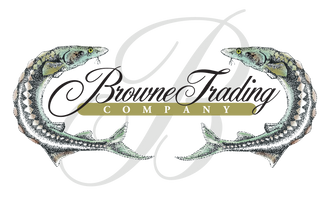
Maine Oyster Guide
It might surprise some that there are only five unique species of oysters in the United States – and from Maine to the Gulf of Mexico, the champion is the common Eastern Oyster, or Crassostrea virginica. This Eastern Oyster has many different market names (think “Wellfleets” “Blue Points” “Dodge Coves” etc.) so named after where they come from, and while they are all the same species, each oyster differs from state to state, and from cove to cove. We contend that the cold-water Maine Oyster's, robust, deep cupped, textured and full of briny “liquor” are the best oysters you can find.
History of Oysters in Maine

Maine’s Ideal Oyster Growing Environment

Boutique Oyster Farms of Maine

Maine Oyster Farming is a small production, hands‐on business, and our harvesters take great pride and care in what they do. Due to the artisanal nature of these small farms, along with the harvest seasonality and long grow‐out periods necessary to raise oysters to market size, the annual demand for Maine oysters far exceeds the harvest. Consequently, they command high prices – especially during the Summer months when vacationers are seeking out fresh New England seafood. Currently, there are only about 15 major growers in the state, although smaller, part‐time aquaculturists are on the rise. Most of these growers are actually family‐run companies sited on family land and leasing the tidal growing areas from the State of Maine. Production can be seasonal as many do not (or really cannot) harvest in the heavy depths of a Maine winter when the rivers have iced significantly and well below freezing air temperatures threaten the oysters’ out of water survival.
Winter Point Oyster Farm in Bath, Maine While their methods may vary, all growers start with hatchery‐grown “seeds” that are as small as a grain of sand. They are placed “nursery” upwellers until they mature to size (usually about the size of a quarter), and then are “planted” in beds on the river floor (some farmers float oysters instead in cages or racks, although this practice not common in Maine). The oysters are allowed to grow to size, raked or even hand‐harvested during collection, and finally floated in wet storage prior to sale to purge the oysters of any grit. Oyster farming is a combination of patience, knowledge, and hard physical labor. Before being bagged, most oysters have their shells cleaned and are graded for quality and size by hand. Oysters are usually sold in sizes, with “Cocktails” being 2.5 ‐ 3 inches long, “Selects” about 3‐4 inches, and “Jumbos” over 4 inches each The Damariscotta River estuary in Maine is the largest site for oyster growth. Oyster companies name their products from the areas in which they are grown. Oyster farming has an extremely low impact to the environment and is considered “restorative” as they grow naturally and are filter feeders that help “clean” the water. No matter the area or size, most Maine oysters have strong, hard shells, plump and full meats, and the beautiful briny and sweet flavor of the clean sea. Often their environment can impart distinct flavors, ranging from slightly metallic to notes of “citrus”. They are a true local, all natural delicacy – and uniquely Maine in flavor!
